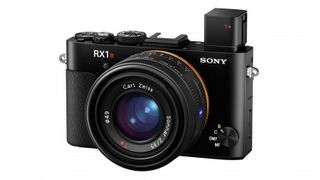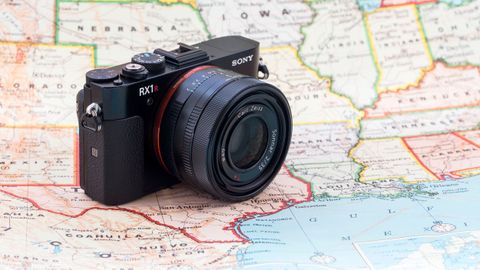Why you can trust TechRadar
Sony's technological prowess continues to impress with the RX1R II. When Leica brought out its Q last year, the full-frame fixed lens compact market finally had another player. Sony, to its credit, has come back with something which also has an excellent viewfinder, but can out resolve the Leica.
The images are undeniably beautiful – they're a joy to look at. It's the detail which really makes them pop, and you can't help but be impressed when you look back at them on your computer screen. That said, you'll need to have a fast computer if you don't want to be frustrated by the huge file sizes the camera produces.
You'll also need to invest in some fast, high capacity SD cards too, unless you want to be changing them very frequently (or you don't want to shoot in raw format).
Using the RX1R II is also a great experience. It's one of those cameras that you can't wait to get out and shoot with. It has an almost film camera like look about it, while its light weight and small size mean you don't mind carrying it around with you all day. The addition of the fantastic electronic viewfinder really elevates this camera for me – and anybody who appreciates composing with a viewfinder will really enjoy this addition. The fact that it collapses into the body is pretty marvellous too.
There are some quirks of using the camera, some of which you'll learn to get over, or adjust to, such as the aperture ring being just a bit too close to the camera body for maximum comfort. Others, such as the lack of a touch sensitive screen, are more consistently annoying if you often like to change the focus point.

We liked
Without doubt, the best thing about the RX1R II is its ability to create stunning, detailed and beautifully saturated images. Although you only have one focal length to work with (35mm), it's quite a flexible focal length for lots of different subjects, including environmental portraits, architecture, some landscapes, and it is a favorite focal length for street photographers.
The addition of the world's first variable optical low pass filter means that you have ultimate control over the amount of detail the camera is capable of producing, but if you do find yourself photographing something which produces moire, you've got a solution for that too.
We disliked
Sony still hasn't created the perfect camera here, sadly. Battery life is poor, and presumably because of the massive file sizes created by the camera, processing and operational speeds are slower than we'd like.
It's also a shame not to see any kind of optical image stabilisation. While it's true that the type of subjects which are great for this kind of focal length are often characterised by quick shutter speeds, having to stick to 1/125 or 1/100 or faster to be on the safe side is a little disappointing when you consider how slow the Leica Q will let you shoot.
Final Verdict
Pretty much every year Sony comes up with some technological innovation which is designed to keep the company at the forefront of photographers' minds, helping it to draw their attention away from the giants of the industry, Nikon and Canon.
With the RX1R II, Sony has produced something fantastic and makes for excellent competition for the Leica Q, its nearest rival. The high resolution sensor, the addition of the viewfinder and the variable optical low pass filter are great new features, but there are enough reasonably small niggles to add up to a less than perfect offering.
It's a camera you undeniably want to use, but, at such a high asking price, it continues to be a niche product for a niche audience. Those who have got the money though, count yourself lucky, because the image quality is gorgeous.
See also:
Amy has been writing about cameras, photography and associated tech since 2009. Amy was once part of the photography testing team for Future Publishing working across TechRadar, Digital Camera, PhotoPlus, N Photo and Photography Week. For her photography, she has won awards and has been exhibited. She often partakes in unusual projects - including one intense year where she used a different camera every single day. Amy is currently the Features Editor at Amateur Photographer magazine, and in her increasingly little spare time works across a number of high-profile publications including Wired, Stuff, Digital Camera World, Expert Reviews, and just a little off-tangent, PetsRadar.

Why sovereign AI infrastructure is driving worldwide adoption of Generative AI

Real life 6G speed tests revealed by Japanese tech giants — 100Gb/s transmissions could become the norm for mainstream wireless network data transfer within a few years

A big Garmin Forerunner update is on the way – here are 5 new features we're excited about

